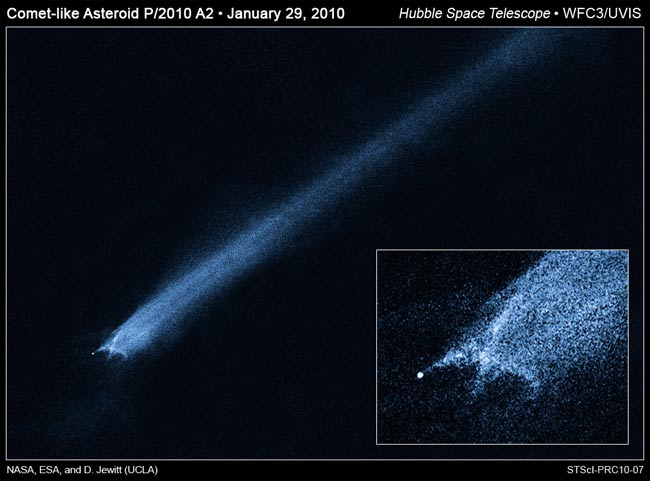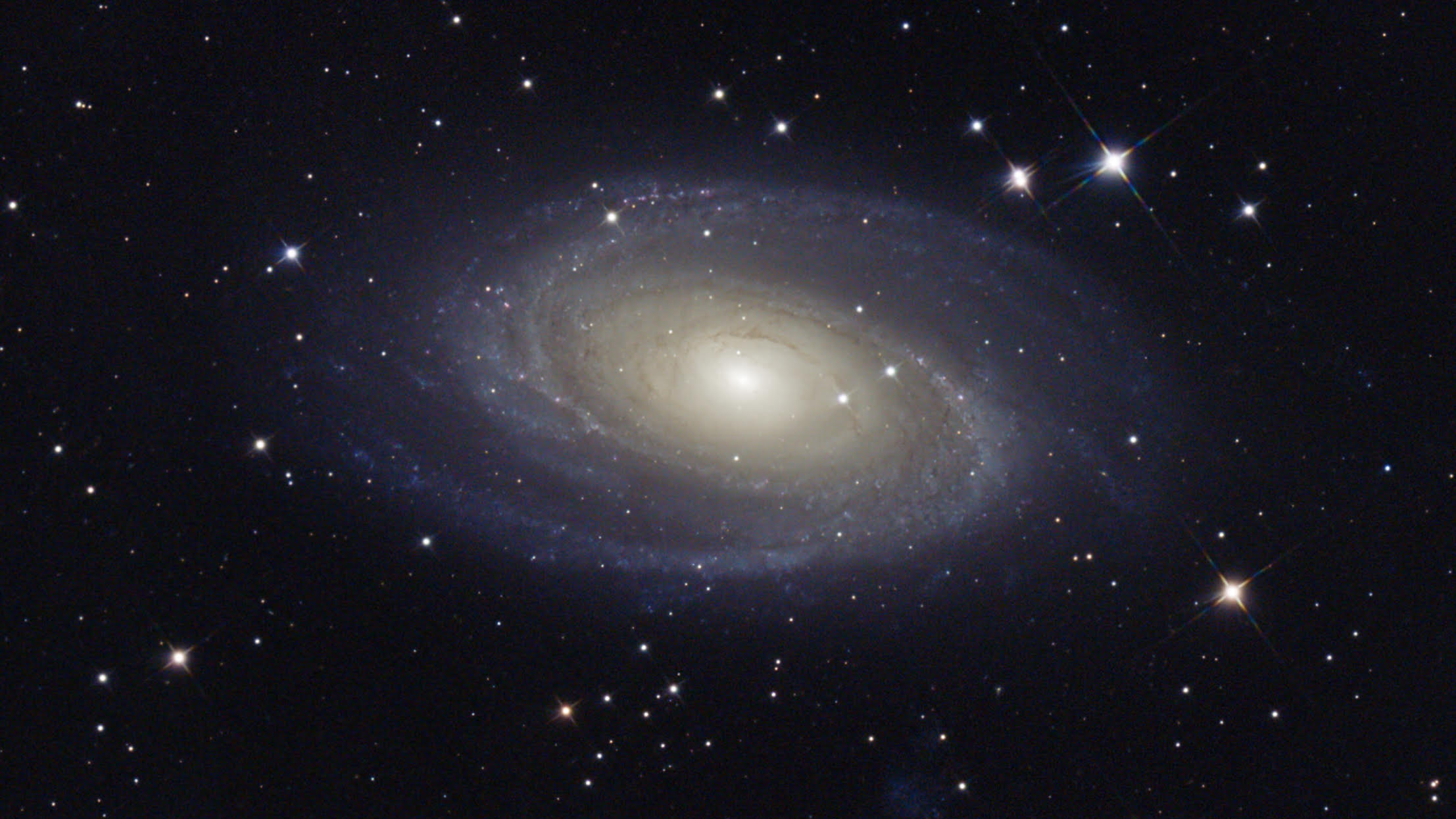Slam! Two Asteroids Suspected in Space Collision

A mysterious trail of debris spotted in space suggests two asteroids recently slammed into each other.
Though such space rock collisions are thought to be common, direct evidence of the cosmic smashups has never been seen before. New images from NASA?s Hubble Space Telescope, however, have caught the suspected collision on camera.
An X-shaped debris pattern was observed by Hubble on Jan. 25 and 29. The pictures, released today, show a comet-like object, dubbed P/2010 A2, with the X-pattern of filamentary structures near the nucleus.
"This is quite different from the smooth dust envelopes of normal comets," said study leader David Jewitt of the University of California at Los Angeles. "The filaments are made of dust and gravel, presumably recently thrown out of the nucleus. Some are swept back by radiation pressure from sunlight to create straight dust streaks. Embedded in the filaments are co-moving blobs of dust that likely originated from tiny unseen parent bodies."
The two asteroids likely smashed into each other with an average impact speed of more than 11,000 miles per hour, or five times faster than a rifle bullet.
The Hubble photos show that the main nucleus of P/2010 A2 lies outside its own halo of dust. This pattern has never been seen before in a comet-like object. The nucleus is estimated to be about 460 feet (140 meters) in diameter.
Scientists think this nucleus is the surviving remnant of the collision, and the tail is the rubble left over from the crash.
Get the Space.com Newsletter
Breaking space news, the latest updates on rocket launches, skywatching events and more!
"If this interpretation is correct, two small and previously unknown asteroids recently collided, creating a shower of debris that is being swept back into a tail from the collision site by the pressure of sunlight," Jewitt said.
P/2010 A2 orbits in the warm, inner regions of the asteroid belt between Mars and Jupiter. When the object was observed, it was approximately 180 million miles (290 million km) from the sun and 90 million miles (145 million km) from Earth.
The Hubble images were captured by its new Wide Field Camera 3, which was installed during the May 2009 space shuttle servicing trip. The camera can spot house-sized fragments at the distance of the asteroid belt.
- Video - Asteroid Collision Watch
- Asteroid Warning System Needed to Protect Earth
- Catastrophe Calculator: Estimate Asteroid Impact Effects Online
Join our Space Forums to keep talking space on the latest missions, night sky and more! And if you have a news tip, correction or comment, let us know at: community@space.com.

Space.com is the premier source of space exploration, innovation and astronomy news, chronicling (and celebrating) humanity's ongoing expansion across the final frontier. Originally founded in 1999, Space.com is, and always has been, the passion of writers and editors who are space fans and also trained journalists. Our current news team consists of Editor-in-Chief Tariq Malik; Editor Hanneke Weitering, Senior Space Writer Mike Wall; Senior Writer Meghan Bartels; Senior Writer Chelsea Gohd, Senior Writer Tereza Pultarova and Staff Writer Alexander Cox, focusing on e-commerce. Senior Producer Steve Spaleta oversees our space videos, with Diana Whitcroft as our Social Media Editor.









